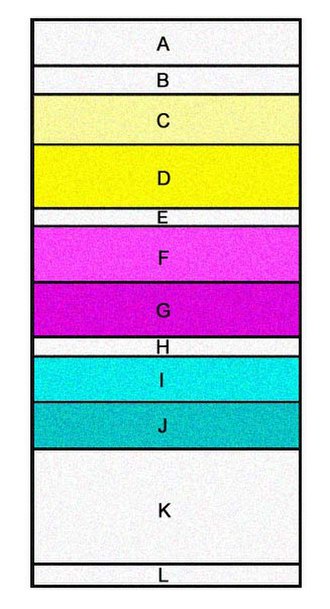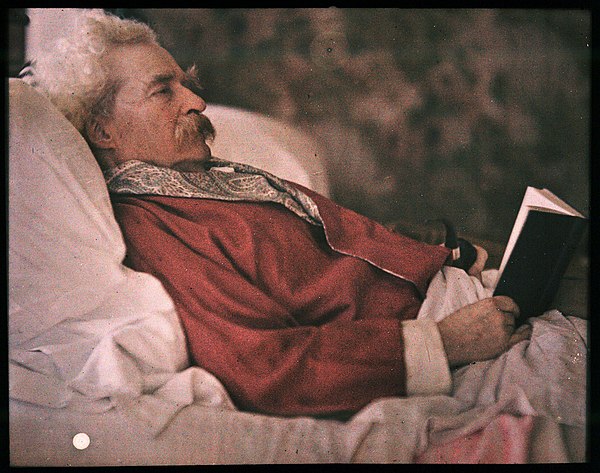Color motion picture film
Videos
Page
Color motion picture film refers both to unexposed color photographic film in a format suitable for use in a motion picture camera, and to finished motion picture film, ready for use in a projector, which bears images in color.

Still from test film made by Edward Turner in 1902

A strip of undeveloped 35 mm color negative.

A representation of the layers within a piece of developed color 35 mm negative film. When developed, the dye couplers in the blue-, green-, and red-sensitive layers turn the exposed silver halide crystals to their complementary colors (yellow, magenta, and cyan). The film is made up of (A) Clear protective topcoat, (B) UV filter, (C) "Fast" blue layer, (D) "Slow" blue layer, (E) Yellow filter to cut all blue light from passing through to (F) "Fast" green layer, (G) "Slow" green layer, (H) Inter (subbing) layer, (I) "Fast" red layer, (J) "Slow" red layer, (K) Clear triacetate base, and (L) Antihalation (rem-jet) backing.
Color photography
Videos
Page
Color photography is a type of photography that uses media capable of capturing and reproducing colors. By contrast, black-and-white or gray-monochrome photography records only a single channel of luminance (brightness) and uses media capable only of showing shades of gray.

The first color photograph made by the three-color method suggested by James Clerk Maxwell in 1855, taken in 1861 by Thomas Sutton. The subject is a colored ribbon, usually described as a tartan ribbon.

A color photograph made by Gabriel Lippmann in the 1890s, containing no pigments or dyes of any kind.

A 1908 Autochrome Lumière photograph of American author Mark Twain.

A 1914 color photograph of the Taj Mahal published in a 1921 issue of National Geographic magazine.